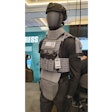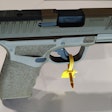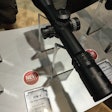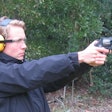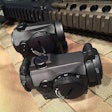Introducing the topic of point shooting vs. aimed fire during the use-of force panel at last week's International Association of Law Enforcement Educators and Trainers (ILEETA) conference, moderator Massad Ayoob told the almost-capacity audience he wanted to discuss a topic that spurs copious comments on gun training forums.
The panel, which consisted of firearms trainers, law enforcement officers, a physician, an attorney, and a psychologist, discussed the issue in terms of training and officer-involved shootings. And it concluded that point shooting may be what happens in a gunfight but to point shoot well under stress officers need to aim when they train.
"Point shooting well under stress is all about muscle memory," said New Braintree, Mass., chief of police Bert DuVernay. "And the way you achieve that muscle memory is by learning to align your sights."
DuVernay said that training officers to point shoot without training them to aim was a "shortcut." "There is no instinctive ability to shoot. So we need to teach our people to use the sights under realistic conditions. That's the answer, not point shooting."
Firearms trainer Vicki Farnham said point shooting allows shooters to put a lot of shots downrange very quickly but the results are less than spectacular. "I had a student who was somewhat slower than the other members of one of my classes, but his groups were excellent. When I asked him about it, he was defensive. 'I shoot the old-fashioned way,' he told me. 'I use both of my sights.' You better be able to use both of your sights and to hit what you want to hit," she said.
Sgt. Brian Stover of the Los Angeles County Sheriff's Department echoed Farnham's story. "I was trained the old-fashioned way," he said. "And I've only been in one shooting. I fired three roundS and hit him once. I can tell you that an accurate shot ends the problem."
The panel acknowledged that point shooting is often effective, but firearms trainer John Farnham said that officers should not make the poor poker player's error of "mistaking good cards for brains." He added, "We trainers have to persuade our students to do what works best in most circumstances and that is use their sights."
Physician and gun trainer James Williams argued that trainers should keep an open mind on the issue. "What we need to do is find out what the agencies that really are doing a good job hitting the bad guys are teaching their officers and copy them," he said.
Law enforcement psychologist Alexis Artwohl told the audience that she is not a shooter and certainly not a gun trainer, but she did have some advice on the issue. "This is a life-and-death question. So we need to ask ourselves, 'What does the research show?' That's a huge problem in law enforcement: A lot of the training is based on myths, assumption, and personal opinion. We need to know what works."
Attorney Laura Scarry didn't have the actual last word in the discussion, but she summed up the feelings of every panelist with advice to every working officer in the room. "When it comes to point shooting or aiming, do what is necessary to come home to your spouse."










